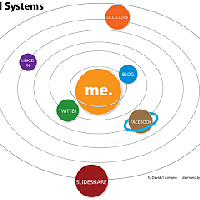Home
About Us
Page 2
Furthermore, the SWAPs will also look into issues that can and will potentially affect species of greatest conservation need and will then develop techniques and strategies geared towards addressing the such issues and protecting their habitats.
|
|
The State and Wildlife Competitive Grant Program will only solicit project proposals that seeks to address the following:
a) Eligible issues that have been identified through service-approved State Wildlife Action Plans
b) Emerging issues concerning Species of Greatest Conservation Need
The United States Fish and Wildlife Service has emphasized that they will be giving priority to proposals that have outlined measurable results and outcomes.
The FWS has allocated an overall project budget amounting to $5,000,000. The agency plans to administer multiple awards that can range from $300,000 to $1,000,000 each.
The only entities that will be eligible to take part in the State and Wildlife Competitive Grants Program are those with Service-approved State Wildlife Action Plans and are primary responsible for the fish and wildlife management and conservation in each of the 50 States, the Commonwealths of Puerto Rico and Northern Marianna Islands, as well as the territories of the US Virgin Islands, Guam, America Samoa and the District of Columbia.
The Department of the Interior, the mother agency that funding the State and Wildlife Competitive Grants Program, is the nation's leading agency that is primarily responsible for increasing access to natural and cultural heritage, as well as enforcing the States' responsibilities to Indian tribes and island communities.
State Wildlife Competitive Grants Program
Back to Page 1
About The Author Iola Bonggay is an editor of TopGovernmentGrants.com one the the most comprehensive Websites offering information on government grants and federal government programs. She also maintains Websites providing resources on environmental grants and grants for youth programs. |
Additional Resources
category - Environmental Grants
Grants From The Department of Agriculture
Invasive Aquatic Species Inventory and Infestation Prevention Program
Department of Homeland Security: 2011 Earthquake Technology Transfer
Alaska Native-Serving and Native Hawaiian-Seving Institutions Education Competitive Grants Program
Follow @topgovtgrant
Social Entrepreneurship
Spotlight
Social Enterprise Version 2.0

Midsize businesses are tapping into the social business market because large companies do not need the help of start-ups to create a “social technology stack.” But a social business stack cannot generate revenue by itself.
